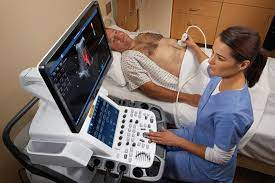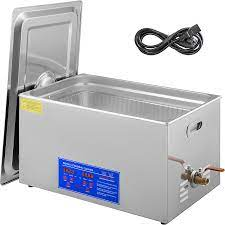Ultrasound waves are generally used in diagnostic applications. Diagnostic ultrasound devices produce pulses at a frequency of two to twelve MHz. However, they can be used in therapeutic applications, as well.

Therapeutic ultrasound devices may use a higher frequency, continuous waves, or short bursts of energy to provide effective treatment to the target tissue. Some therapeutic ultrasound devices have been approved for surgical applications, including transdermal drug delivery, cataract removal, uterine fibroid ablation, and lithotripsy.
Ultrasound is commonly produced from piezoceramic crystals. The crystals are electrically activated, causing the ultrasonic vibration. This enables ultrasound to act as a catalyst. It also allows for a variety of industrial applications, including chemical reactors.
Ultrasound can be used to generate a variety of biological effects, including cavitation, mechanical stress, and heating. This type of energy is more efficient than conventional methods.
The use of ultrasound for therapy continues to increase. For example, the medical community is using intensely focused ultrasound to target cancer cells and kill them. High-power ultrasound, or HIFU, can treat several diseases, including atrial fibrillation, pulmonary embolism, bleeding, and impotence. However, HIFU can also cause complications, so it is essential to evaluate the risks associated with HIFU before implementing this procedure.
The properties of ultrasound waves that travel through biological tissues have been extensively studied in recent years. This knowledge has led to the implementation of these technologies into many critical medical tools. Many medical instruments, such as catheters, have been developed to use ultrasound for various functions.
Ultrasound can be used for various industrial applications, including spray drying, mixing, and cleaning. For information on the benefits of a Large Ultrasonic Cleaner, go to www.hilsonic.co.uk

In the food industry, ultrasonics can reduce foaming and improve droplet size distribution, and they are also more environmentally friendly than other methods. There are many ways to minimise foaming and increase the size distribution of the fluids used in beverages. Other uses of ultrasonics are in the packaging industry.
Medical applications of ultrasonics are also expanding. Recently, a study proposed using ultrasonic waves and chemical agents to target tumours. This method can effectively treat certain cancers but may lead to adverse effects.
HIFU is used in various medical applications, including surgery, neurosurgery, and urology. HIFU is sometimes associated with a difficulty known as acoustic streaming, which occurs when ultrasound is applied to an area of the body with a high blood vessel density.
